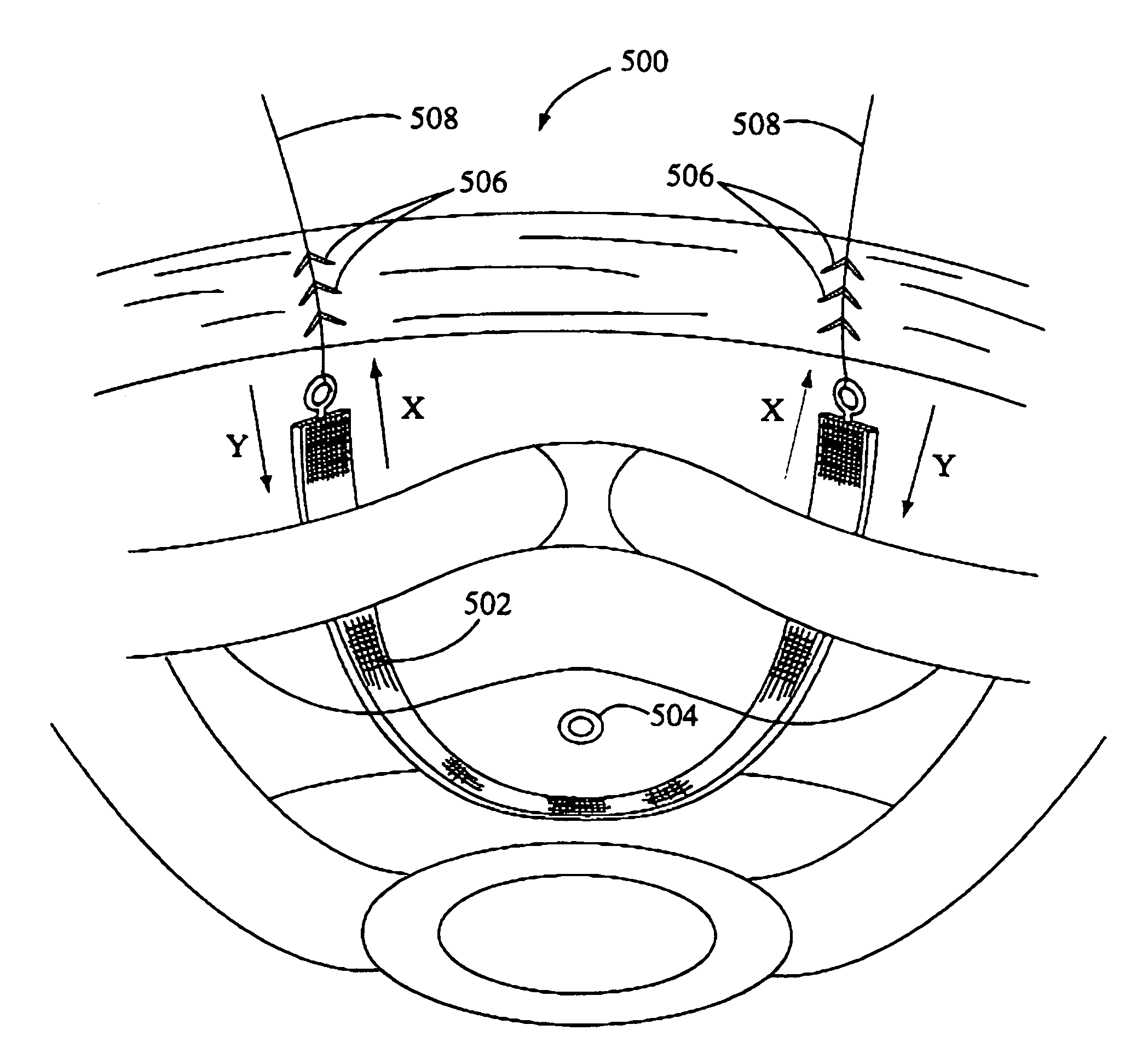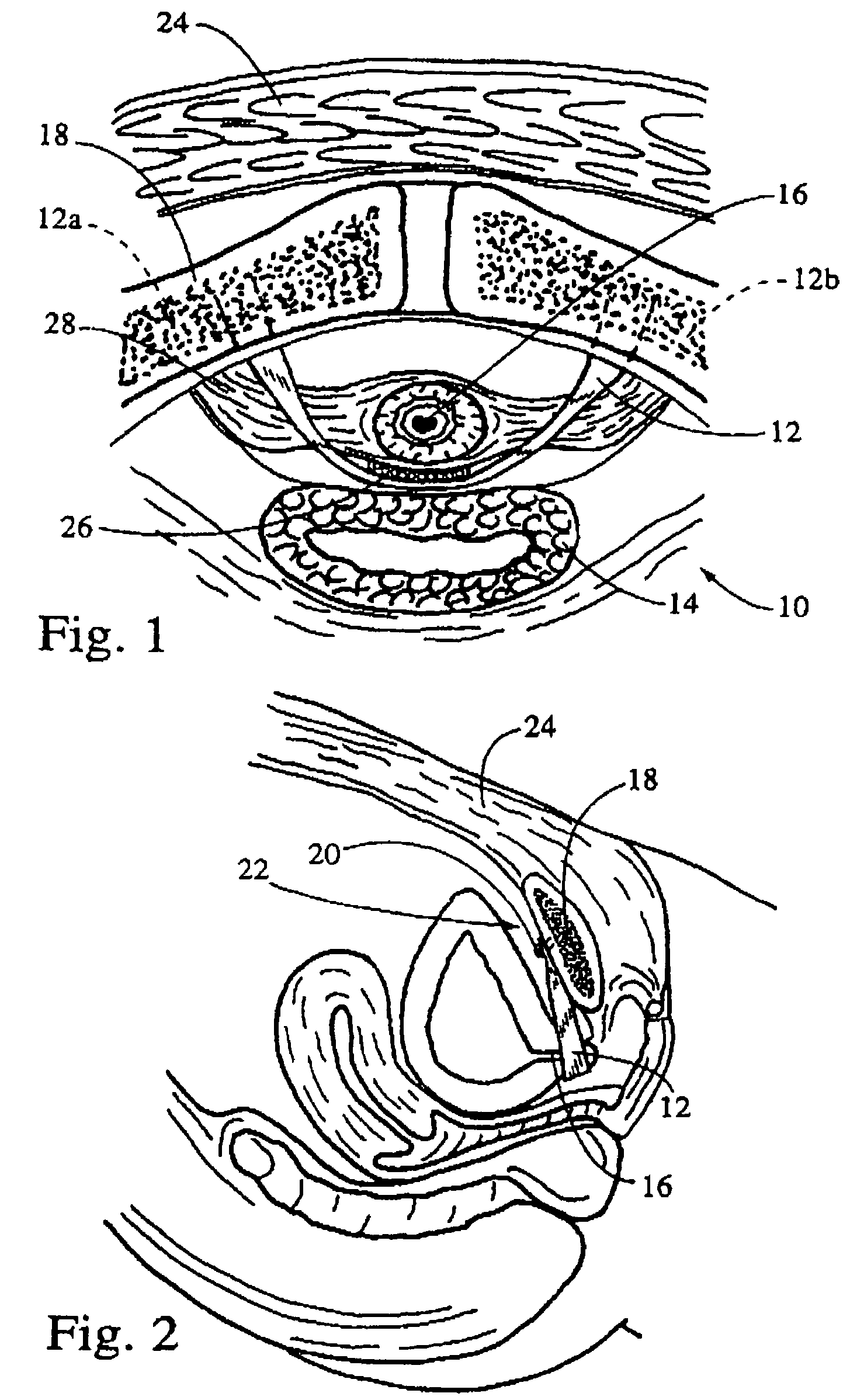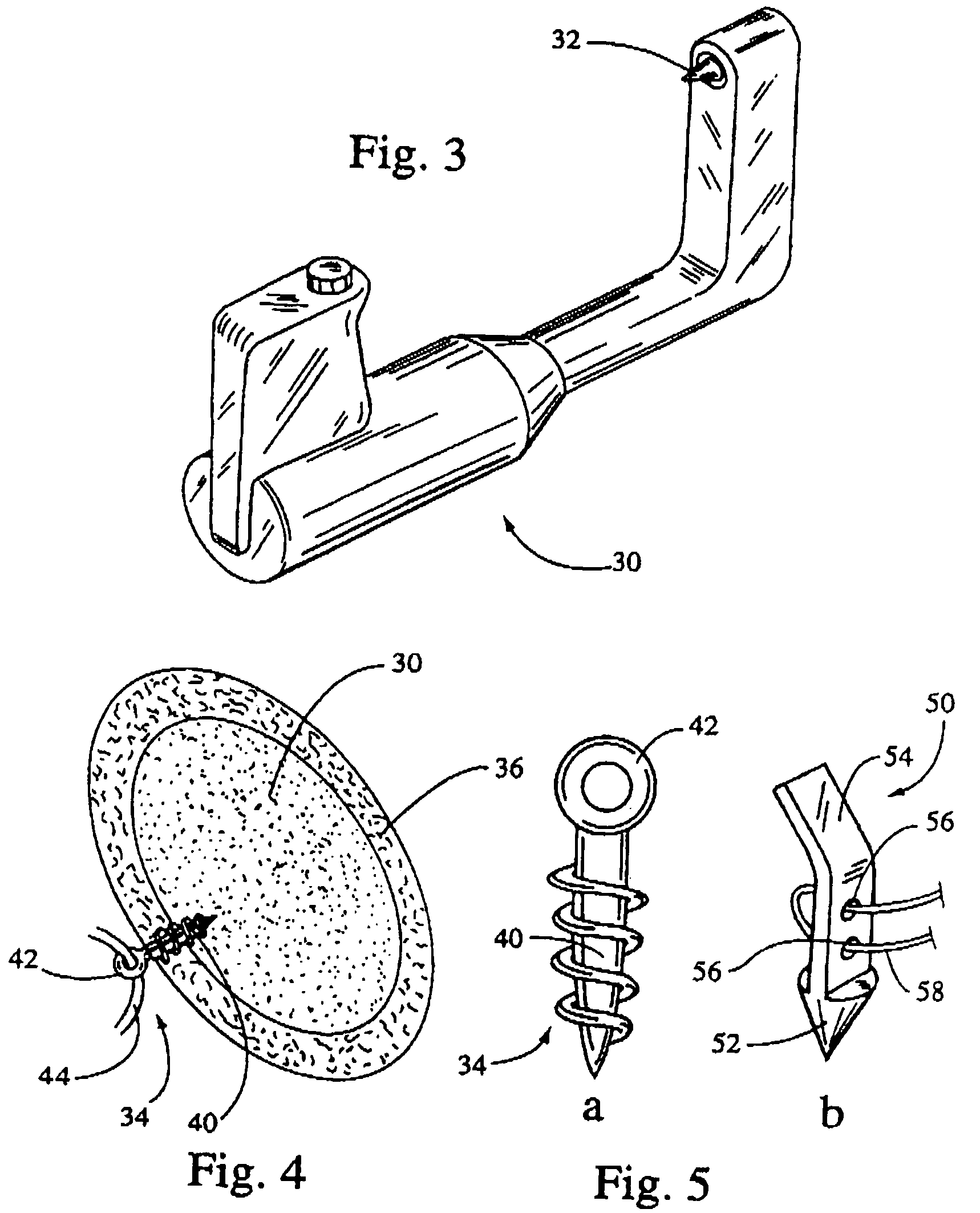Systems for securing sutures, grafts and soft tissue to bone and periosteum
a technology of periosteum and grafts, applied in the field of systems for securing sutures, grafts and soft tissue to bone and periosteum, can solve the problems of difficult for surgeons to accurately deploy the insertion device, substantial difficulty in removing and adjusting such devices, and numerous drawbacks of fixing devices, etc., to achieve convenient and convenient use, simple structure, and convenient use
- Summary
- Abstract
- Description
- Claims
- Application Information
AI Technical Summary
Benefits of technology
Problems solved by technology
Method used
Image
Examples
Embodiment Construction
[0053]The detailed description as set forth below in connection with the appended drawings is intended as a description of the presently preferred embodiments of the invention, and is not intended to represent the only form in which the present invention may be constructed or utilized. The description sets forth the functions and sequences of steps for constructing and operating the invention in connection with the illustrated embodiments. It is understood, however, that the same or equivalent functions and sequences may be accomplished by different embodiments and that they are also intended to be encompassed within the scope of this invention.
[0054]Referring now to the drawings, and particularly FIGS. 6-15, there are shown various embodiments of the devices and systems of the present invention for securing sutures, grafts, tissues and synthetic materials, and the like to bone, periosteum and other soft tissue. As is well known in the practice of medicine, a wide variety of surgica...
PUM
 Login to View More
Login to View More Abstract
Description
Claims
Application Information
 Login to View More
Login to View More - R&D
- Intellectual Property
- Life Sciences
- Materials
- Tech Scout
- Unparalleled Data Quality
- Higher Quality Content
- 60% Fewer Hallucinations
Browse by: Latest US Patents, China's latest patents, Technical Efficacy Thesaurus, Application Domain, Technology Topic, Popular Technical Reports.
© 2025 PatSnap. All rights reserved.Legal|Privacy policy|Modern Slavery Act Transparency Statement|Sitemap|About US| Contact US: help@patsnap.com



